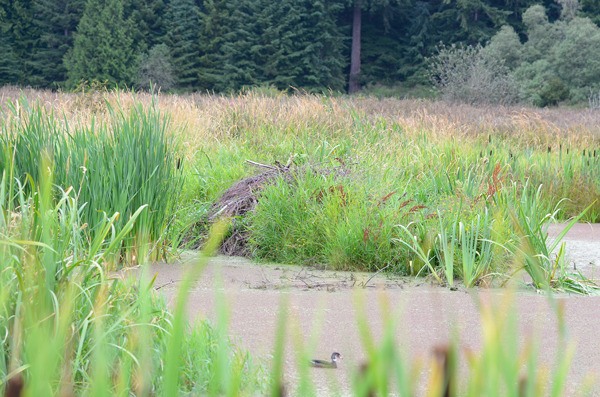Island County’s 2014 beaver dam rules sprang a significant leak recently when a state regulatory board found they failed to protect critical areas as required by state law and were not based on best available science.
The Growth Management Hearings Board for Western Washington issued the ruling late last month. It also identified six other failures in the fish and wildlife habitat conservation areas update adopted by the Island County Commissioners this past September.
The decision leaves the commissioners with a one-year deadline to bring the ordinance into compliance, and a local environmental group once again saying, “I told you so.”
“I try not to, but you can see it 100 miles away … and here we are all over again,” said Marianne Edain.
Edain is the “brushfire” coordinator for Whidbey Environmental Action Network (or WEAN), a non-profit group with a mission to restore and preserve native biological diversity on Whidbey Island and in the Pacific Northwest. The group has repeatedly and successfully challenged county growth and development rules, such as its critical areas ordinances. The 2014 update itself was the result of an earlier hearings board decision in which WEAN protested the county’s plan to complete the wildlife rules and comprehensive plan updates at the same time in 2016.
The county was already years past a state-mandated 2005 deadline and the hearings board upheld WEAN’s appeal that it be completed sooner rather than later.
Island County Commissioner Helen Price Johnson this week said she hadn’t been briefed on the hearings board’s decision in detail and couldn’t comment on specifics. She did say, however, that the ruling addressed “specific and minor” issues. The rest of the update, she said, remains unchallenged.
“Most of the update was compliant,” Price Johnson said.
She added that the county overall is a leader when it comes to environmental protections.
“There are a lot of programs we have that are above and beyond other counties,” she said. “I’m proud of that.”
The hearings board decision evaluated 12 challenges levied by WEAN; seven were upheld, five were tossed. Summarized, the body ruled that a definition of “reasonable use,” an exemption for beaver dam removal and buffer requirements for natural area preserves all failed to protect critical areas and include best available science.
Beaver dams were a hot topic last year as business owners and farmers affected by flooding, particularly in Maxwelton, clamored for flexibility in dealing with the dam-building critters during the update approval process. Karen Krug of Spoiled Dog Winery on Maxwelton Road said the county should comply with the hearings board ruling, but that the issue remains — beavers and the flooding they cause results in property damage.
“It costs people a lot of money for something they can’t control,” Krug said.
She likened them to noxious weeds. If people have the problem on their land, they should be responsible for addressing it before it negatively affects neighboring property owners.
Steve Erickson, spokesman and legal coordinator for WEAN, said he believes there are instances where beavers should be controlled, but the county’s ordinance largely exempted dam removal. That was unacceptable, and the hearings board agreed, he said.
“We’ve never said a beaver dam should never be removed, but an outright exemption goes too far,” he said.
Erickson said there were bigger issues than beaver dam removal, however, that the hearings board also supported. Specifically, it ruled that the county failed to: designate and protect habitat of flora listed by federal or state governments as areas where at-risk species have a primary association; designate and protect westland prairies, oak woodlands and herbaceous balds as habitats of local importance; designate and protect the Western Toad as a species of local importance; and establish clear standards for administration discretion concerning the exemption extensions for existing and ongoing agricultural practices.
Erickson, in a prepared statement to the media, called prairies the “rarest and most threatened ecosystem in Western Washington” and that WEAN has struggled “to get the county to protect them for more than 20 years.” He claimed more than 99 percent of the prairies on Whidbey Island have been lost to agriculture, residential development and road building.
“The county spent nearly two years trying to justify its predetermined decision not to protect rare plants, Western Toad, and prairies,” he wrote. “Now they’ve got a full year to do it right and actually protect our heritage for the future. I just hope that they stop delaying.”
Price Johnson said it’s unclear how the county will respond to the hearings board’s decision. It can appeal the ruling to Island County Superior Court or comply with its requirement. That decision has yet to be made, she said.
David Wechner, the county’s planning chief, and Adam Long, the civil deputy prosecutor who argued the case before the hearings board, echoed those sentiments. It’s simply too early to say what actions the county will take, they said.



